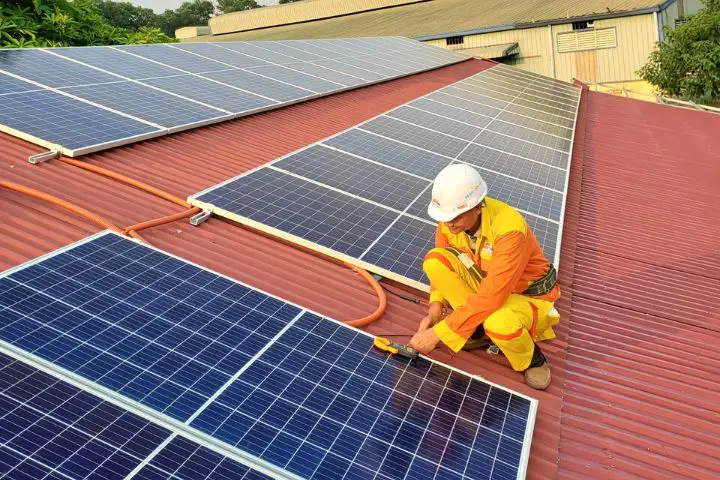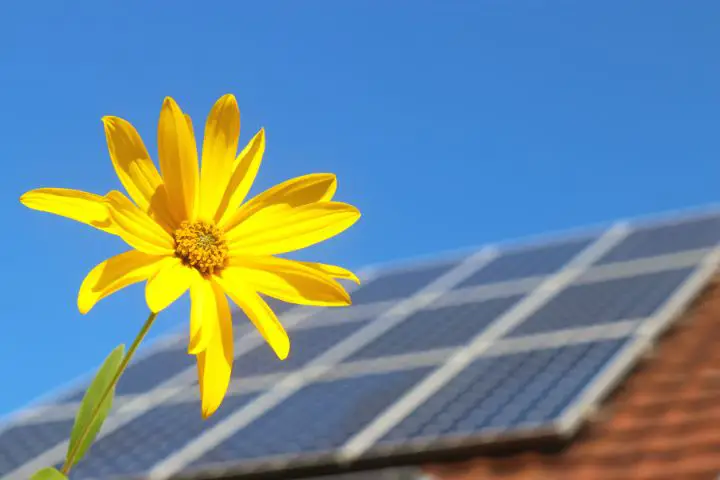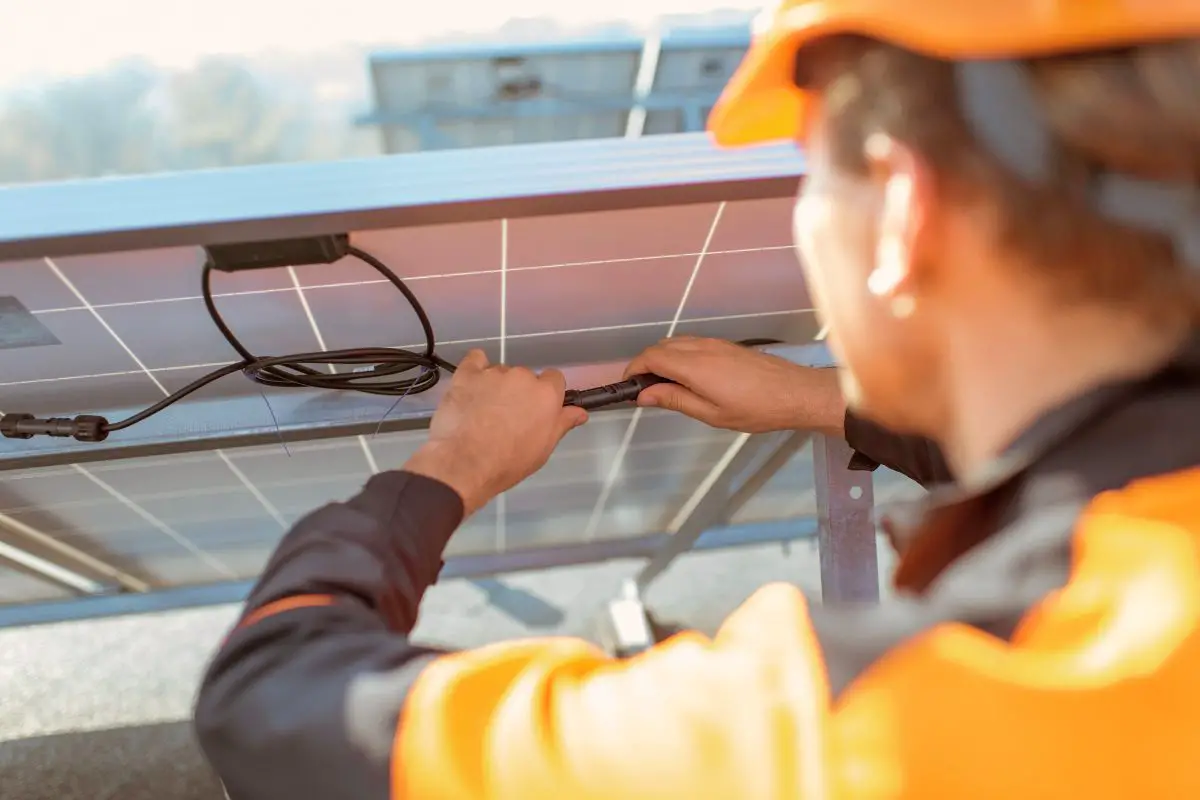A Non-Nerdy Guide to Series vs Parallel Solar Panel Wiring
I’ll be honest – the way your solar panels are wired makes a big impact on their performance.
If you want to DIY your sunny configuration, there are two main types of wiring your solar panels: parallel and series. Now, I know what you’re thinking: Why does this sound like my electronics class from high school? But don’t worry. You won’t break out in a cold sweat trying to figure out the math behind these types of connections.
Understanding the difference between series and parallel wiring is what’ll turn you from a wishy-washy solar panel user to an expert on solar panels. It’ll also impact everything from the efficiency of your solar panels to the overall performance of your solar power system.
So, grab a cup of coffee, and let’s demystify solar panel wiring together!
Series vs. Parallel: What Does It Mean?

Nothing better than starting with the basics.
**Slaps a thick Introduction to Electronic Devices book on the table.**
Imagine you’re stringing together a line of fairy lights you just bought from IKEA. If you connect them end-to-end, that’s similar to series wiring. If you connect them side-by-side, that’s more like parallel wiring.
That’s how solar panels also work and how their wiring is done. Just think of their wiring as connecting your IKEA fairy lights, except these lights absorb light… Weird, I know.
Series Wiring: The Relay Race
In series wiring, solar panels are connected end-to-end, like a daisy chain (who doesn’t love making those?).
The positive terminal of one panel is connected to the negative terminal of the next. This setup increases the voltage while the current (measured in amps) stays the same. It’s like a team of horses pulling a carriage: the speed (voltage) increases, but the strength (current) remains the same.
Series wiring is often used in two cases:
- Extremely limited space
- When maximizing voltage output is a must
But be warned: This kind of solar wiring has a big flaw. If one of your daisies breaks, there goes the whole daisy chain. The same goes for series-connected solar panels. If one panel is shaded or not performing wellies, it affects the performance of the entire series.
Parallel Wiring: The Teamwork Approach
On the other hand, parallel wiring is like a lean, mean, unbeatable team machine. Each of the team members (or panels) works independently but contributes to the overall team goal.
In this setup, each panel is connected directly to the main cable, so the current (or the number of goals achieved) is the sum of the currents from each panel. The voltage (or the speed of the players), however, stays the same.

Parallel wiring is great when:
- You have enough space for a larger system
- You want to maximize the current
The great thing about parallel wiring is that if one panel is shaded or not working, it won’t affect the others. But remember, this setup requires more wiring, which ramps up installation costs.
Golden nugget: Parallel solar panel wiring is great if your rooftop doesn’t get consistent sun exposure (probably it’s because of that pesky tree in the neighbour’s yard). However, parallel-wired solar panels pack quite a punch. To control all that massive energy, you need strong solar panel charge regulators.
Key Differences: Series vs Parallel
Now that our short “Introduction to Electronics Devices” session is over, let’s highlight the key differences between series and parallel wiring:
- Voltage and Current: In series wiring, the voltage increases while the current stays the same. In parallel wiring, the current increases while the voltage stays the same.
- Performance Impact: In series wiring, if one panel is shaded or malfunctions, it can affect the entire system. In parallel wiring, each panel operates independently (great if you want to install them on your cabin in the woods).
- Installation: Parallel wiring requires more cables and is more complex to install than series wiring. It’s also more pricey, so you’ll need to increase your solar budget by at least 20%.
Golden nugget: Always consider your specific needs and circumstances when choosing between series and parallel wiring. Factors like your energy needs, roof size and orientation, and local climate conditions can all play a role in determining the best setup for your home.
The Good, the Bad, and the Series: Pros and Cons of Series Wiring
Thanks to our short introduction, we learned series wiring goes like a daisy chain, connecting one solar panel to the next. But what does this mean for your solar energy production, and how does it affect it?
The Bright Side of Series Wiring
The primary advantage of series wiring is :
- It increases voltage while reducing energy loss during transmission.
- It’s great if you’re building a solar farm, and the distance between the solar panels and inverter is almost miles long.
- It’s a simple and extremely cost-effective approach to building large-scale solar systems.
- Placing your panels at different angles or orientations is possible with series wiring, bringing you flexibility from the get-go.
As Temitayo from Electronics 360 put it (paraphrasing): “You need to be careful with series wiring. If you don’t use an MPPT unit or solar regular, you can kiss your battery bank goodbye!”
The Shadows of Series Wiring
However, series wiring isn’t all daisies and rainbows.
The main disadvantage is its vulnerability to shading issues. If one panel in the series is shaded, the output of the entire series drops. It’s like when a team member is underperforming, the whole team’s performance suffers.
But there’s a neat trick on how to bypass the notorious shading issues that plague series solar panels.
You see, when you connect solar panels in series, it’s important to include bypass diodes so that the voltage can easily flow to panels next in line if the previous ones are under shade. It’s at least a small, cool electronics trick I learned from @petermorris9592 YouTube user.
Another thing you should be aware of is future expansion.
Adding more panels into your series-connected is more challenging than simply adding some screws and connector plugs. By adding more solar panels into your series configuration, you push the voltage levels higher. There’s a maximum voltage limit every MPPT and solar regulator unit has, and exceeding it isn’t the smartest idea I would try.
Fun Fact
Did you know that series wiring is also used in many everyday items, like Christmas lights? Next time you’re untangling a string of your Santa-riding-reindeers lights, remember you’re handling a series circuit!
Parallel Wiring in Solar Panels: Weighing the Pros and Cons
Let’s switch gears and delve into parallel wiring.
Think of parallel wiring as adding more lanes to an already speedy highway, allowing for more traffic (sun-converted current) to pass. But what does this mean for your solar energy production?
The Sunny Side of Parallel Wiring
The primary advantage of parallel wiring is the increase in current. This particularly comes in handy when you have a large roof space and want to maximize the power output of your solar system.
Another thing you’ll love about parallel is that it’s extremely scalable. Just add another solar panel to the system without ever worrying about additional system configuration.
It’s like a plug-play method but with solar panels.
The Cloudy Side of Parallel Wiring
**Unravels a huge spool of a 12-gauge solar panel wire.**
Wires, wires, and more wires.
That’s the main disadvantage of parallel solar wiring. Not only does it increase the complexity of the installation, but it ramps up the installation price too! Since you’re accumulating huge amounts of current, you’ll also need extra protection, grounding, and fuses.
If you want to DIY this complex wiring (that’s the true EnviroMom spirit!), shop for components and cables rated for higher amperage levels. Don’t be cheap with this one.
Trust me; I heard cases of parallel solar systems catching fire due to poor wiring.
Golden nugget: When considering parallel wiring, remember to prioritize safety. The increased current requires proper management to prevent overheating and potential fire hazards. Always work with a certified solar installer to ensure your system is set up safely and efficiently, or be extremely cautious and do your safety due diligence if you want to DIY.
Series vs. Parallel: Making the Right Solar Wiring Choice
Now, you might be wondering: Which one is right for my home?
There isn’t an exact answer to that question. Even the experienced solar professional would know it without considering these factors:
- Assess your energy needs – In other words, calculate. There are a ton of useful solar energy calculators online that’ll help you out with that.
- Evaluate your roof – Take a good look at your roof, its size, orientation, and the amount of sunlight it receives throughout the day. All of them will influence your solar panel wiring configuration.
- Know your local climate – If you live in an area with consistent, strong sunlight, either series or parallel wiring could work well. But if your area is prone to shading or cloudy weather, parallel wiring might be a better choice.
- Get practical professional advice – Maybe neither series nor parallel wiring works in your case. Maybe a combination of both, so-called series-parallel solar panel wiring, is your best bet. Many solar systems use a combination of series and parallel wiring to balance voltage and current for optimized peak performance.
Wrapping Up

There you have it – both the sunny and shady side of both series and parallel solar wiring.
Some are good for starting a large-scale solar system. For some, you need more cable and high protection (you don’t want your solar panel to self-ignite, do you?), and for some, you need professional help and configuration.
A good rule of thumb: Whatever you do, don’t follow the first piece of advice you find on the internet (unless it’s mine, of course!). Align your solar panel wiring setup according to your unique circumstances – our energy needs, the size and orientation of your roof, and your local climate. Without those in check, you’ll be wasting money, and your solar system wouldn’t work efficiently.






